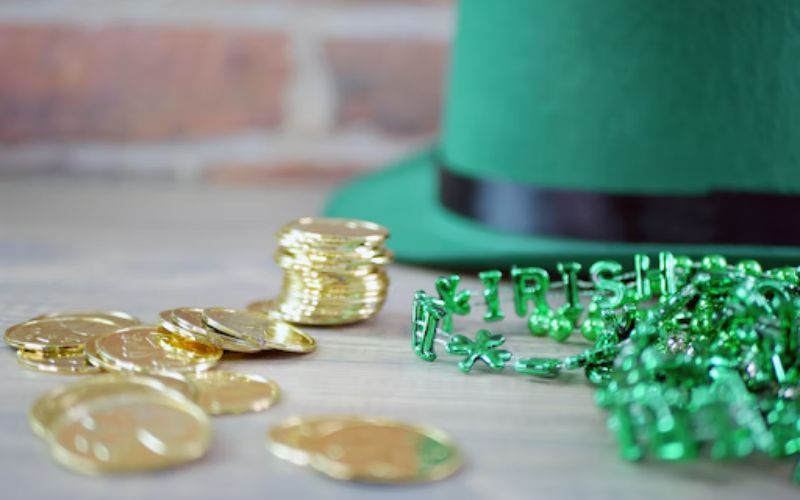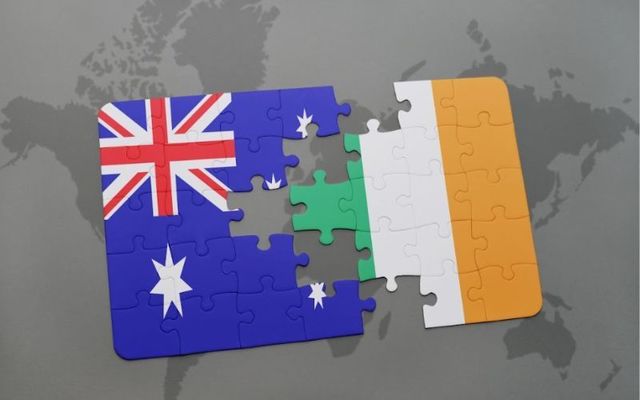Over 15,500 kilometers separate Ireland from Australia; despite this considerable distance, Australia hosts one of the largest Irish diasporas.
In the Australian Census 2021, 9.5% of individuals reported being Irish, making up Australia’s third largest ethnic group and impacting the country’s culture. While the spread of Irish people to the land down under seems peculiar, there’s a historical context for Australia to have a large Irish population:
The Origin of Irish-Australians
Australia began as a penal colony of Great Britain in the late 18th century. A ship taking 155 Irish convicts from County Cork to Sidney in 1791 is the first record of an Irish settlement in Australia. By 1868, 7000 more Irish convicts kept coming. One such famous journey was that of 250 Irish convicts who narrowly escaped death in December 179: the ship nearly got wrecked on a beach just a few miles away from Sidney, but the Aboriginals came to the rescue, leaving only one casualty.
1798 saw the Irish stand up to the British throne. The Society of United Irishmen was a republican group influenced by the American and French Revolutions, which disapproved of the Irish’s treatment at the Anglican establishment’s hands. They waged a war that continued for five months, but the British quickly suppressed the uprising and convicted the revolutionaries, many of whom were sent to Australia.
Another major event In Irish history that increased the Irish population in Australia was the Great Famine in Ireland, which lasted from 1845 to 1852. The Irish were significantly dependent on potato crops, and famine spread when a water mould infestation ruined produce. Around two million Irish left Ireland in one of history's biggest mass exodus from a single island. As Australia had already developed a significant Irish diaspora, many of the immigrants chose it.

Credit: Unsplash.com
Discrimination Against the Irish
The Irish were ethno religiously discriminated against in Australia well until the 1960s as they were mainly Catholics, and other Australians were mostly Protestants. Even protestant Irish were not exempt, as the Anglicans would still discriminate against them for being Irish.
E.K. Bowen, Australia’s defense minister in the 1920s, remarked that Australia was a Protestant country, a comment perceived as a dog whistle against the Catholic Irish. Marrying a non-Irish as an Irish was frowned upon, and individuals were socially ostracised and cut out of the will for marrying the Irish. The anti-Irish sentiment was prevalent in the media, where newspapers would frequently publish racist caricatures, and in businesses, which would post a ‘no Irish may apply’ sign next to their advertisements.
By the 1990s, the anti-Irish sentiment had lessened as Irish individuals moved up the ladder and got more influential as a community. Discrimination against the Irish is a dark part of the country’s history, and isolated incidents against the Irish-Australian community happen to this day.
Irish Influences on Australia
The Irish have impacted Australia in all avenues of life, including politics, history, and culture. The working-class Catholic Irish-Australians are a core demographic for the Australian Labour Party, which has given the country four Irish-Australian prime ministers to date.
The Irish community has influenced Australian culture; for instance, St. Patrick’s Day is a significant festival in Australia. Initially, the penal colonies forbade the expression of the Irish identity. Yet, they allowed St. Patrick’s Day, celebrated for the first time in 1795 in Australia. Even today, the holiday is celebrated nationally, and drinking, elaborate banquets, sporting carnivals, concerts, and holiday parades are common.
Australian cuisine has clear Irish influences too. Australia’s fondness for puddings and the meat-and-three-vegetable meals comes from its Irish migrant history. The Irish love for drinking has influenced the Australian wine culture, and Irish pubs are a common site throughout Australia, particularly in the Hunter Valley. Tourists fondly go for Hunter Valley wine tours and stop by the Harrigan's Irish pub to taste the finest Irish alcohol in Australia.
The Irish language and dialect influenced modern Australian English as well. They were one of the earliest communities to populate Australia, so their language influenced the new country’s dialect. For example, the didgeridoo, a musical instrument of indigenous Australians, likely gets its name from the Gaelic words ‘dúdaire,’ meaning a horn blower, and ‘duth’, meaning native.
The Irish identity is also at the forefront of Australian literature, giving the country’s literary culture heavyweights like Thomas Keneally. His Irish Catholic identity heavily influences Keneally’s literature, with his novel Crimes of the Father offering a nuanced look inside the church's operations.
The Irish community has impacted Australia in several positive ways: the vibrant Irish culture reflects in Australia’s wine culture, its food, literature, and politics. Every sphere of Australian life is influenced by its Irish community. However, the history of the Irish in Australia is one of resilience and grit. What was once a group of working-class convicts discriminated against because of their religion and ethnicity has become one of Australia’s most significant communities. They also give a lesson in rising above social apartheid and combating xenophobia.




Comments